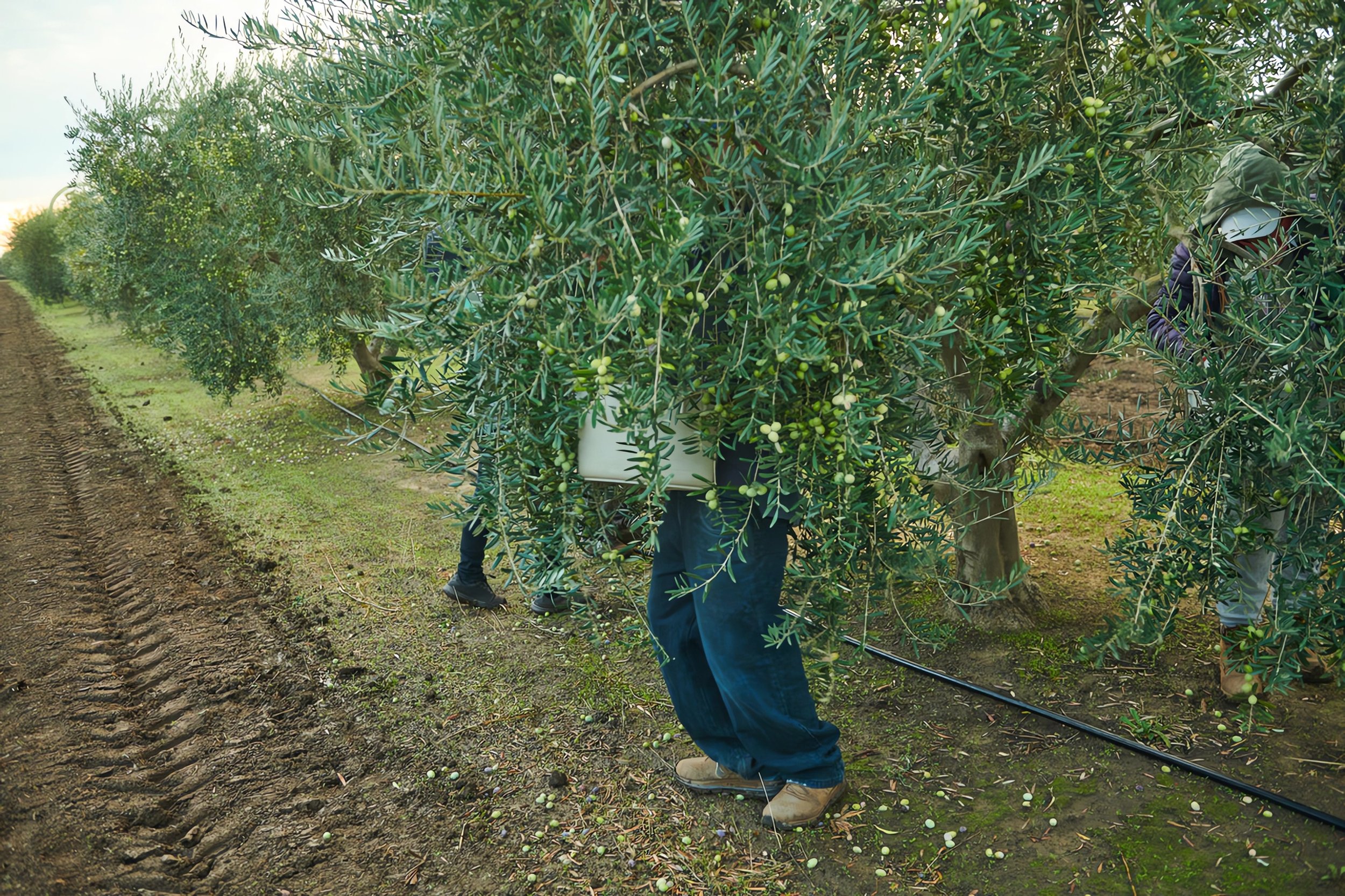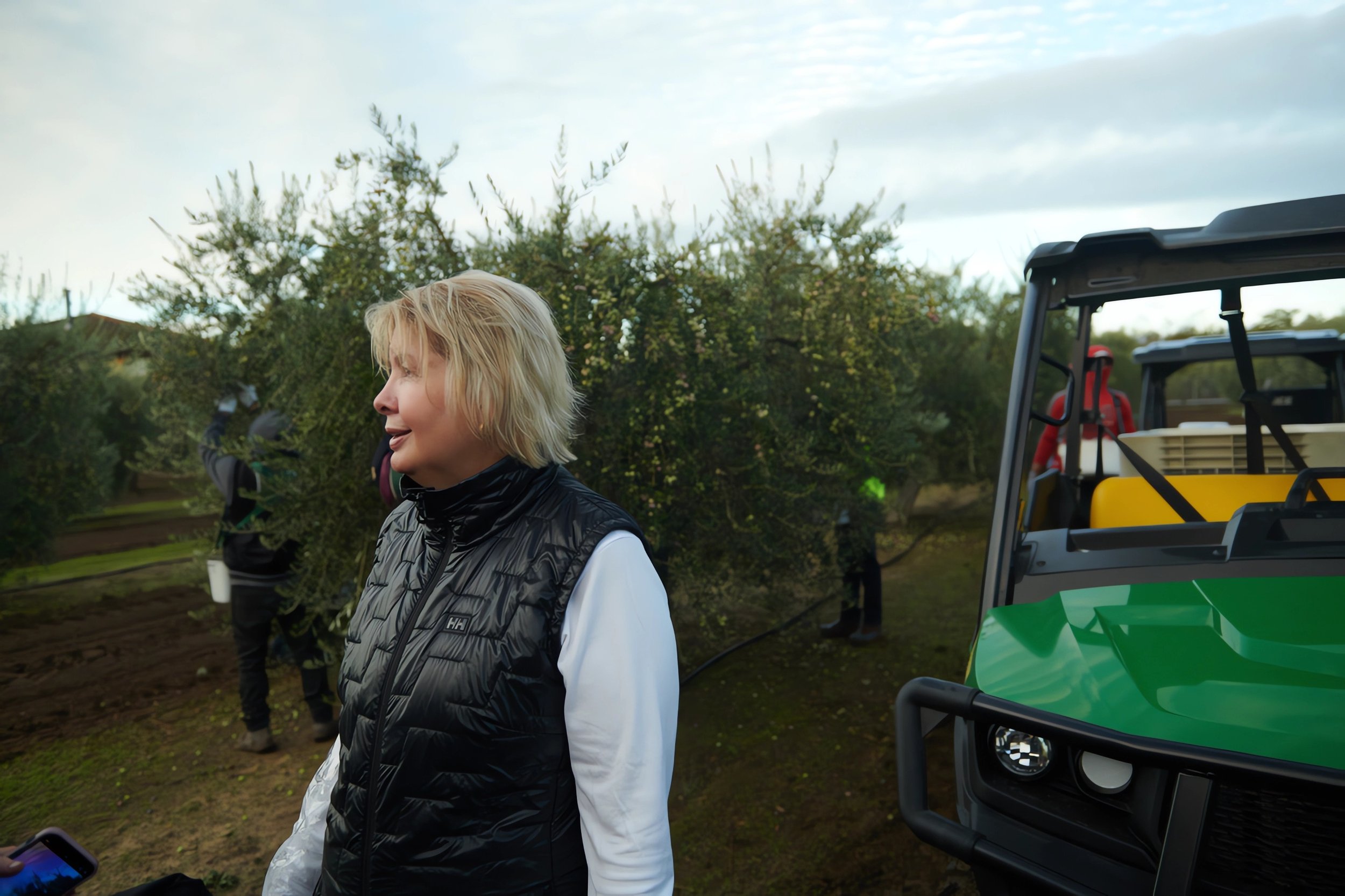How are Olives Harvested for Olive Oil?
Olives have been harvested for thousands of years. In the northern hemisphere, the process typically occurs from summer into fall, depending on tree location. With up to 1,000 olives per tree, this is no small task. And yet some olive growers still utilize hand harvesting, versus mechanical harvesting, in their operations for a variety of reasons.
Hand Harvesting
Hand harvesting at Bondolio
Often tedious and laborious, hand harvest techniques may include collecting fallen fruit from the ground; stripping fruit from limbs with half-open hands into specialized picking netting or plastic; or beating limbs with large sticks to dislodge fruit, before it collects on nets.
Removing olives by hand may result in more gentle olive harvesting before the fruit becomes oil, minimizing damage to the olives. Hand harvesting also allows for a more selective process. This may result in more flavorful oil that is richer in antioxidants when compared to mechanically harvested olives.
Some growers who prefer hand harvesting consider this method more sustainable and environmentally friendly too, as there’s no heavy machinery that can damage the soil, trees, and ecosystem.
Why Bondolio Hand Harvests
Karen Bond during olive harvest
At Bondolio, in Winters, California, co-owners Karen, and Malcolm Bond, prefer to hand harvest their olives. With a 2,000-year-old lineage, their nocellara, cerasuola, and biancolilla olive trees originally came from rich soil near Mount Etna. Processed in an onsite Italian mill, their oils are USDA Organic and tested by NAOOA. Bondolio also belongs to the Extra Virgin Alliance.
“We wanted to do things the old-fashioned way and we talked to many producers in Italy,” says Karen. “We planted our trees 25 feet apart from each other. We also heavily prune the trees each year and have no leaves in the center.” Italian olive growers said a bird should be able to fly through their trees.
The presence of fruit flies in the Bondolio olive grove was another concern. “When trees are close together, there are more fruit flies due to moisture build-up,” Karen says. “You can taste that in the fruit. A good taster can taste for fruit flies too.”
The couple also appreciates how quickly their olives reach the mill, thanks to hand harvesting. “They go to the mill within 90 minutes of picking,” Karen says. “[Hand harvesting] is more expensive but we do believe you get a higher quality of oil.”
Why Rosenthal Olive Ranch Mechanically Harvests
High density olive groves
Yet mechanical harvesting has many fans—especially among larger companies producing at least 5,000 gallons of olive oil, annually. “Olive harvesting equipment was developed from mechanical grape harvesting equipment,” says Rolland Rosenthal, partner at The Mill At Kings River and ranch manager of Rosenthal Olive Ranch in California’s San Joaquin Valley. “The olive cultivars chosen for mechanical harvesting are specific cultivars that grow a bit slower and smaller than table olive cultivars. The main cultivars are arbequina (Spanish), arbosana (Spanish), and koroneiki (Greek). Those cultivars were chosen based on oil yield and flavor. They’re grown in what is called a super high-density planting. Picture more of an olive vineyard rather than an olive orchard.”
View from atop a mechanical harvester
Matching a mechanical harvester to the unique characteristics of an individual olive grove—such as the slope of land on which trees grow—is critical. But mechanized pruning, harvesting, and olive oil processing may provide an important antidote to recent labor shortages across the industry.
“The economics involved is why we choose [mechanical harvesting],” Rosenthal says. “The cost of hand labor, here, has been going up and up and the quality of labor has been going down a little. Managing four guys [for mechanical harvesting], rather than 100 guys [for hand harvesting], is a lot more economical and the equipment will always be there when you need it, too.”
Eighty acres each, of arbosana and koroneiki olives, were initially planted here in 2008. The company crafts two unflavored oils (and sometimes a blend) plus several flavored oils. And harvested olives are processed within about 12 hours. “Some of the fruit does get bruised but it doesn’t really affect the quality of the oil,” Rosenthal says.
Olive harvester photo credit Rolland Rosenthal
“But with mechanical harvesting everything gets picked – from one end of the row to the other. We’re getting a more consistent harvest and none of our olives are touched by human hands.”





